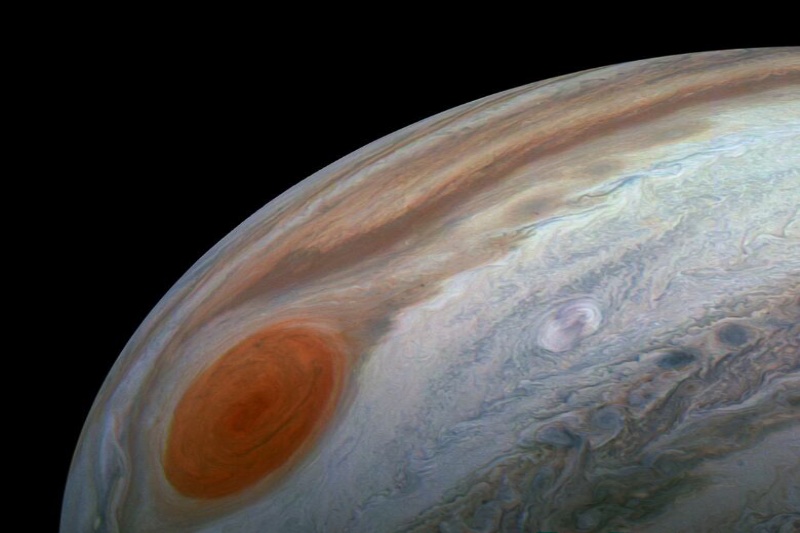Space enthusiasts are enthralled by the breathtaking pictures that NASA often takes of our universe.
The space agency has released an amazing photo of Jupiter’s Great Red Spot taken by the probe Juno. The space probe Juno, which is investigating the giant planet, captured the picture from a distance of roughly 13,917 kilometers. Almost 350 years have passed since the formation of the Great Red Spot, a storm twice the size of the Earth.
Spiraling slivers of brown, orange, and red surround the central Great Red Spot in the NASA photograph. The upper part of the image shows the horizon of Jupiter in contrast to the beige, brown, and blue tones there.
The most identifiable characteristic of the Gas Giant is the result of an anticyclonic storm that has been churning for over 350 years in the high-pressure zone of Jupiter’s atmosphere, according to NASA.
The Great Red Spot has, however, been getting smaller over the past 40 years. The new image shows that its width has decreased by at least a third and its height has shrunk by an eighth since the Voyager spacecraft’s last measurement in 1979.
”The Great Red Spot is still twice as large as Earth, and recent studies by Juno indicate that the storm plunges around 200 miles (300 km) beneath the planet’s clouds. With no solid ground on Jupiter to weaken storms, winds in the Great Red Spot peak at about 400 mph (643 kph),” NASA added.
The basketball-court-sized spacecraft, Juno, was the seventh spacecraft to visit Jupiter when it was launched in 2011. On July 4, 2016, it entered orbit around Jupiter. In its third year of a longer mission to document the enormous planet, it is currently.
Topics #Jupiter's Great Red Spot #NASA










